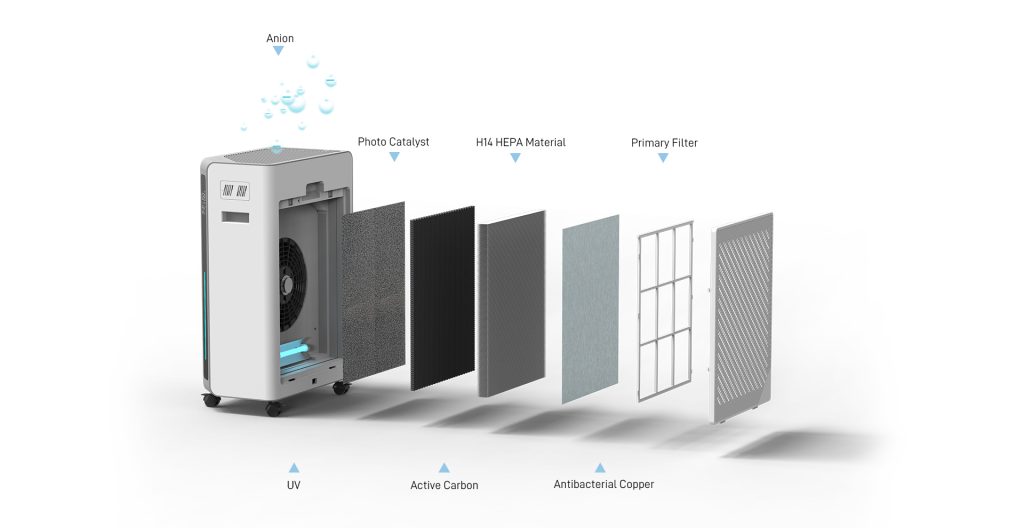An air purifier is an effective tool for improving indoor air quality, and the filter is one of its most critical components. The good condition of the filter directly affects the operating effect of the air purifier and the cleanliness of the indoor air. This article will show you how to determine how often to replace your air purifier filter based on different conditions and usage to ensure it performs optimally and provides fresh indoor air.
What is an air purifier filter?
An air purifier filter is a device that physically or chemically removes harmful substances such as dust, pollen, bacteria, viruses, mold, and odors from the air. Common filter types include primary filters, activated carbon filters, and high-efficiency filters. Different types of filters have different filtration effects and application ranges.
The importance of filter replacement
After long-term use, the filter will accumulate a large amount of dust, particles and harmful substances. These pollutants will affect the normal operation of the air purifier and reduce its filtration effect. Replacing the filter ensures that the air purifier remains in good working order and provides you with clean indoor air.
Factors affecting filter replacement frequency
Usage environment: If you live in a city or in a more polluted area, the air may contain more dust and particles, which will accelerate the clogging and damage of the filter. It is recommended to replace the filter more frequently.
Indoor air quality: If you are using an air purifier primarily to improve indoor air quality, and the indoor air quality is poor, the filter will become contaminated more quickly and will need to be replaced regularly.
Usage time: Long-term use will cause the filtering effect of the filter to decrease. At this time, the filter needs to be replaced in time to ensure the supply of clean air.
Recommendations for filter replacement frequency
The specific frequency of filter replacement varies depending on individual usage conditions. Here are some general recommendations:
Primary filter: Generally replaced every 3-6 months. The primary filter is mainly used to filter large particles and dust, so it is more susceptible to contamination. If the environment you use is relatively polluted, it is recommended to replace it every 3 months.
High-efficiency filter: Generally replaced every 6-12 months. High-efficiency filters are used to filter fine particles and harmful substances, such as bacteria, viruses, etc. The use environment is clean and the replacement cycle can be appropriately extended.
Activated carbon filter: Generally replaced every 6-12 months. Activated carbon filters are mainly used to remove odors and absorb harmful gases. The replacement frequency is similar to the high-efficiency filter.
Other things to note
Filter cleaning: Some filters can be cleaned to extend their life. But please note that different types of filter cleaning methods may be different, please follow the instructions provided by the manufacturer.
Air purifier usage time: Long-term use of the air purifier will also cause filter damage and reduced operating efficiency. It is recommended to turn off the purifier regularly during use based on personal needs to extend filter life.
Replacing your air purifier filter is an important step in ensuring good indoor air quality. Depending on the personal use environment and filter type, determine the frequency of filter replacement appropriately to maintain the optimal performance of the air purifier and the cleanliness of the indoor air. Regularly cleaning the filter and turning off the purifier are also effective ways to protect the filter and extend its life. Remember to follow the manufacturer's instructions and enjoy the health and comfort of fresh indoor air.
Contact us to learn more about air purifier maintenance!



